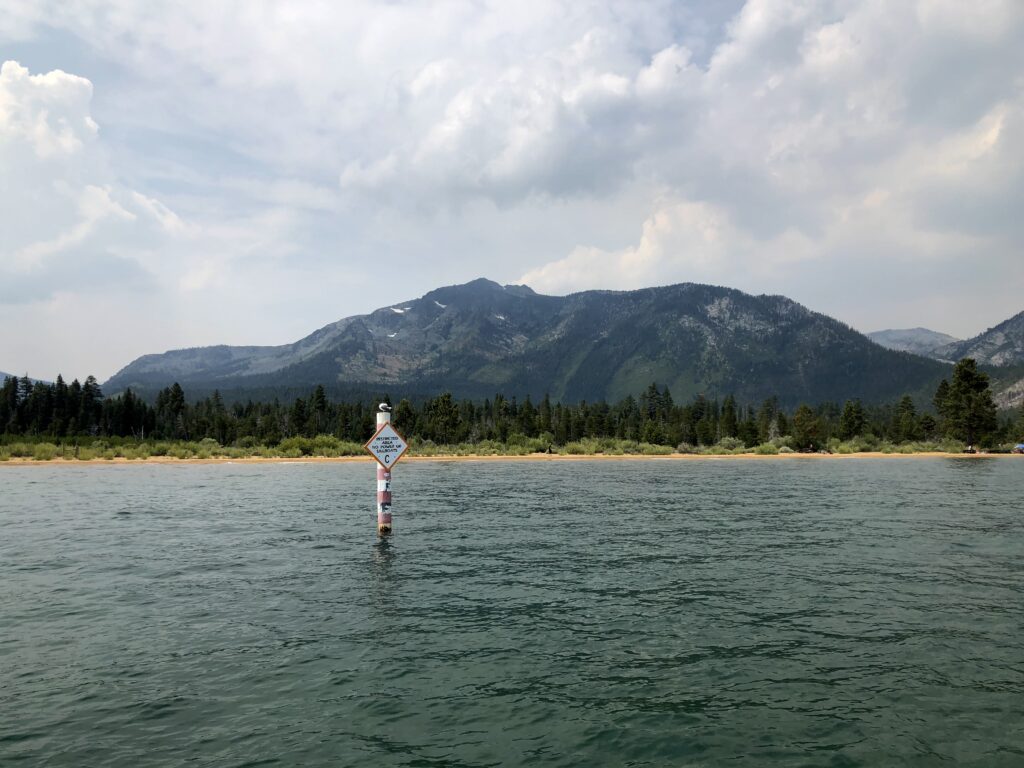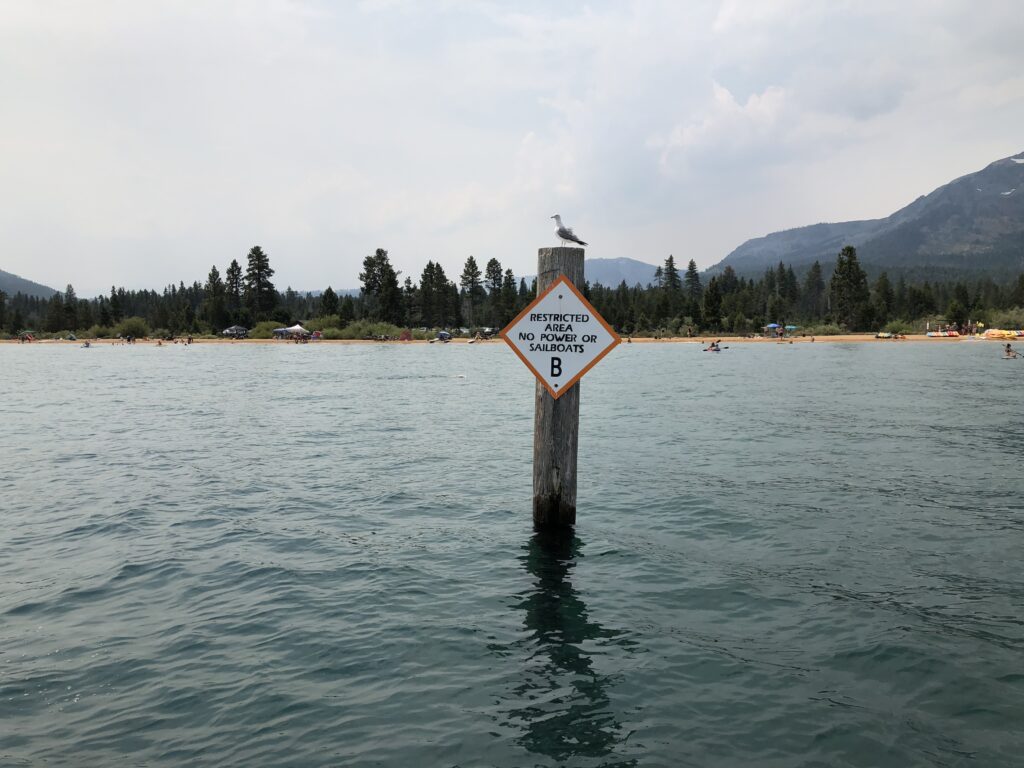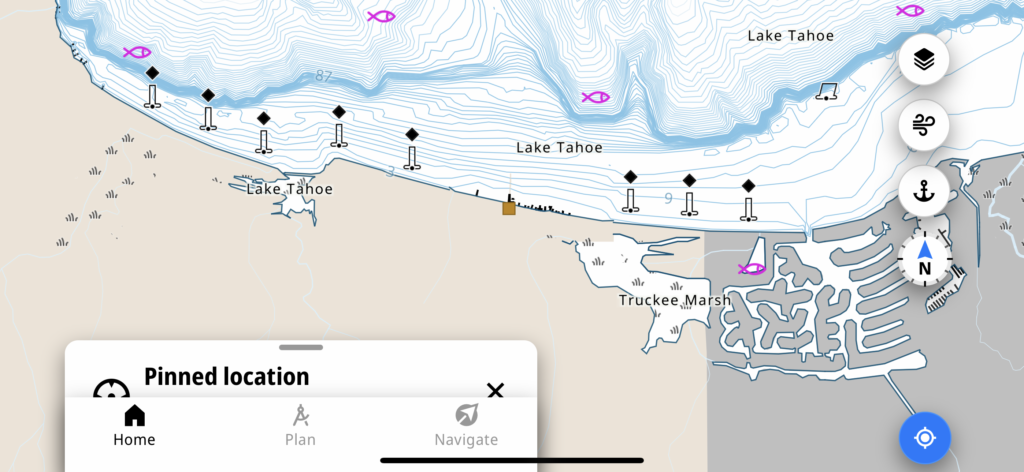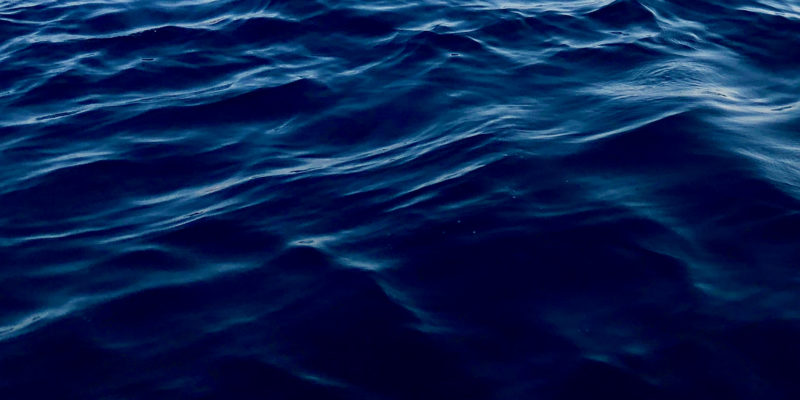
With its pristine waters and breathtaking landscapes, Lake Tahoe is an enticing destination for marathon swimmers and those looking to train in the exhilarating challenge of open water swimming. As with any aquatic adventure, safety should be at the forefront of your mind, especially in an environment as unpredictable and demanding as Lake Tahoe.
First, A Word of Caution:
Swimming in Lake Tahoe is an experience like no other, but it’s imperative to note that swimmers do so at their own risk. The lake’s beauty can sometimes veil the underlying dangers brought on by wind, weather (including thunderstorms), and the chill of its waters. Moreover, external threats, such as inexperienced boaters and jetskiers, can add an unexpected layer of risk for swimmers. Many visitors to Lake Tahoe rent or bring their personal boats; unfortunately, not all are well-versed in safe boating techniques. The added unfamiliarity of having swimmers in the water can create potentially hazardous situations so be especially aware while in the water. The best time to swim is from mid-July through August when water temperatures typically range between the mid to high 60s°F (around 18°C to 20°C). Outside of this period, temperatures can fluctuate significantly, potentially dropping below 40°F (4°C) in the winter.
Lastly, it’s crucial to understand that many swimming locations may be significantly distanced from first responders and medical assistance, potentially causing delays in rescue or aid.
Where to Swim
Swimming is available at numerous beaches dotted around the lake. Although we haven’t dipped our toes into all of them, being based in South Lake and the West Shore has given us some favorites. Before diving into our recommendations, remember these essential tips:
Visibility is Key: Always use a high visibility swim cap, a tow float and, if possible, have an escorting kayaker or boat accompany you. This is vital to enhance your visibility in the water, especially with the aforementioned novice boaters and jetskiers around.
Stay Connected: Carry a cell phone with you, sealed in a waterproof container, ensuring you can call for help in emergencies.
Reach Out to the Coast Guard: Stationed near Tahoe City, and the Coast Guard operates round the clock. In case of emergencies, dial 9-1-1 and mention the beach’s name you’re at.
Our Top Beach Picks

SOUTH LAKE TAHOE AREA: Camp Richardson
Between Pope Beach and Baldwin Beach in South Lake Tahoe lies a designated stretch of beach where powerboats and sailboats are prohibited. While it’s impossible to ensure that boaters always adhere to these regulations, our personal experiences suggest this zone offers a delightful swimming spot. Camp Richardson, with its bustling marina, is nestled in the heart of this area. For an optimal experience, we advise swimmers to stick to either side of Camp Rich. Embarking on a westbound swim towards Baldwin Beach from Camp Richardson and returning covers approximately 4 miles (6 km).

WEST SHORE: Sugar Pine Point Beach
The scenic Sugar Pine Point Beach is located just south of Tahoma on Lake Tahoe’s west shore. We’ve relished our swims in this picturesque part of the lake numerous times. While there isn’t a specifically designated swimming area, we’ve found that sticking to the shallower parts of the beach, around 9 feet (2 meters) or less, provides an enjoyable experience. Fortunately, we’ve never encountered problems with boaters in this area.
It’s essential to mention that while these are our personal recommendations, Lake Tahoe has several other beaches that might be equally delightful or even better. Exploration and discovery are part of the Lake Tahoe experience.
Nature’s Inhabitants
While immersing yourself in the natural beauty, be aware that Lake Tahoe is home to a diverse range of wildlife. In particular, black bears are common in the areas surrounding the lake. Giving them a wide berth is essential and ensuring you don’t inadvertently provoke them — especially mother bears with cubs.
Altitude Awareness
Lastly, training in an alpine lake at a 6,200-ft altitude presents unique challenges. The altitude can significantly affect stamina, breathing, and overall performance. Beyond these altitude-induced changes, cold waters can introduce risks like hypothermia and cold water shock. It’s paramount that swimmers educate themselves on these potential hazards and their symptoms. Familiarizing oneself with signs of hypothermia, the body’s reaction to cold water shock, and other altitude-related concerns is essential. As always, remain vigilant and conscious of your body’s responses, and always prioritize safety while navigating these unique conditions.
In conclusion, training swims in Lake Tahoe can be a surreal experience, but it’s vital to be prepared, cautious, and respectful of nature and other visitors. Always remember to swim within your limits, stay safe, and enjoy the captivating beauty Lake Tahoe has to offer.


